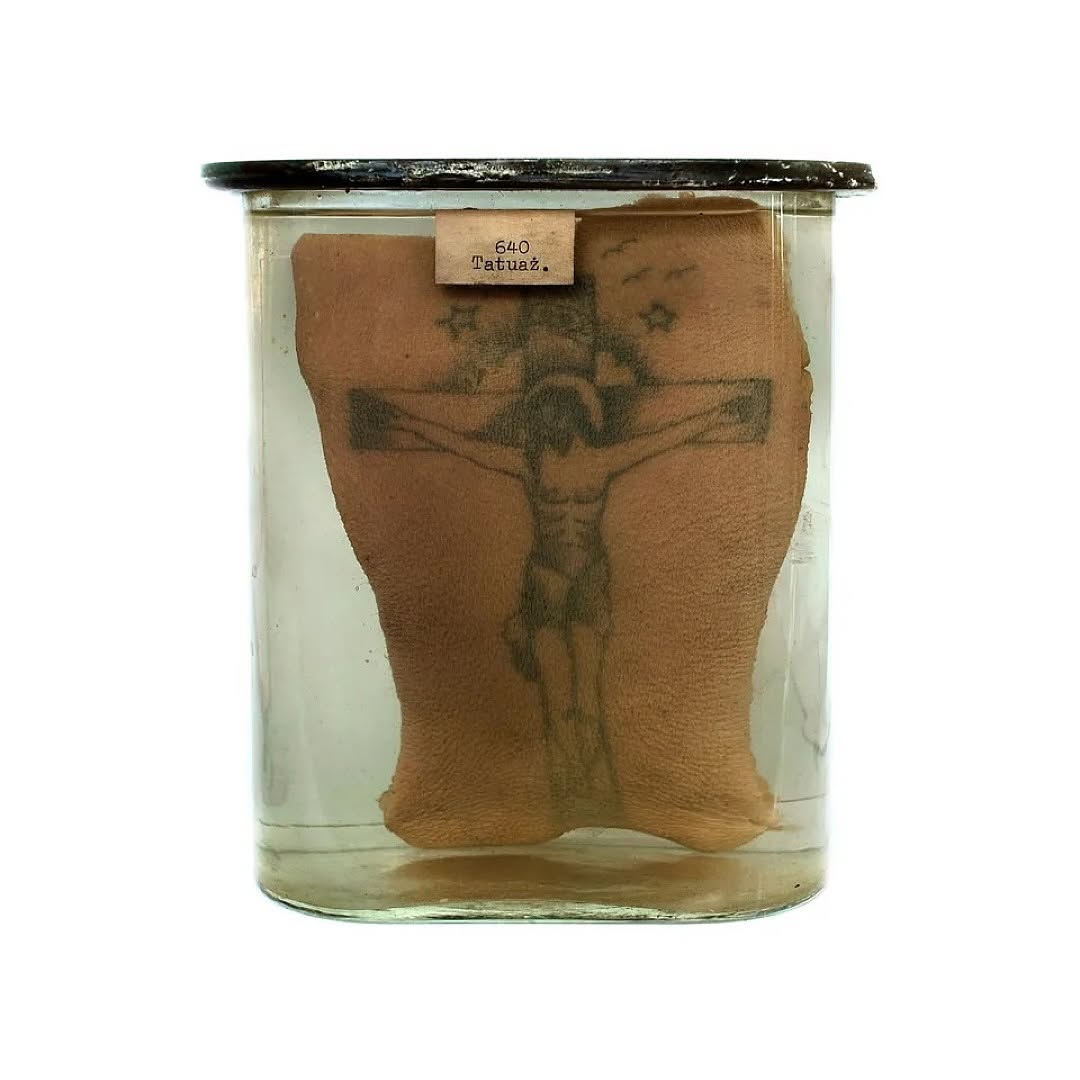Preserved Tattoo Collection, Department of Forensic Medicine, Jagiellonian University, Poland 🪡 In late 19th-century Poland, prison tattoos were illegal but widespread, made with glass shards, pins, or razor blades. Pigments came from burnt rubber, charcoal, pencil lead, mixed with soap, fat, or even urine. After death, forensic doctors sometimes removed tattooed skin to study patterns across criminal networks. In the early 2000s, photographer Katarzyna Mirczak was granted access to the preserved examples at the Department of Forensic Medicine at Jagiellonian University in Krakow. Her project titled “Collection” details over 60 of the human skin / tattoo samples. ⚠️ Content Warning: This post contains historical images of preserved human skin with tattoos. Viewer discretion is advised. Shared for educational and cultural documentation purposes. ⚠️
Channel/Medium:
Instagram
onJul 9, 2025JERKSTM
jerks-store.com
Details
Preserved Tattoo Collection, Department of Forensic Medicine, Jagiellonian University, Poland 🪡
In late 19th-century Poland, prison tattoos were illegal but widespread, made with glass shards, pins, or razor blades
Jul 9, 2025, 2:44 PM
Search thousands of other brands for emails, ads, social media posts, and more.
The Particl web app allows you to see how an email or ad campaign affected sales over time.

Explore emails, ads, and more
Agencies and marketers can cut through the noise and find the best ads, campaigns, and social media content about JERKSTM all in one place, completely free. Take it a step further in the Particl app to see how those campaigns are performing.